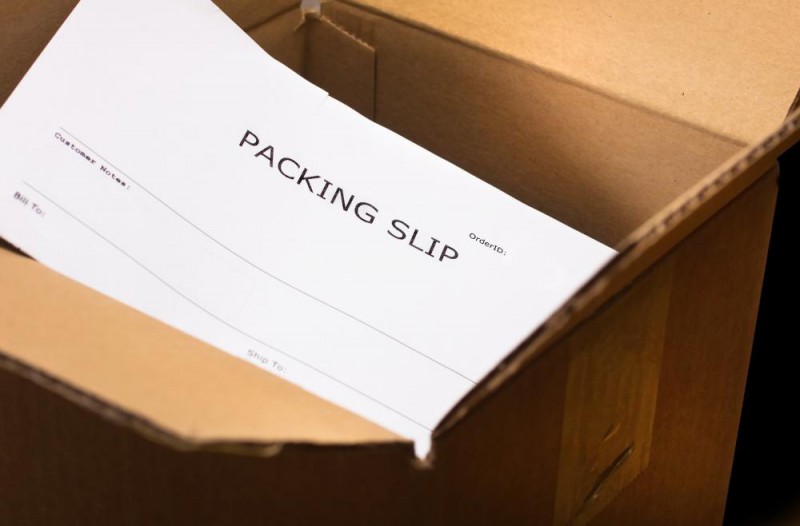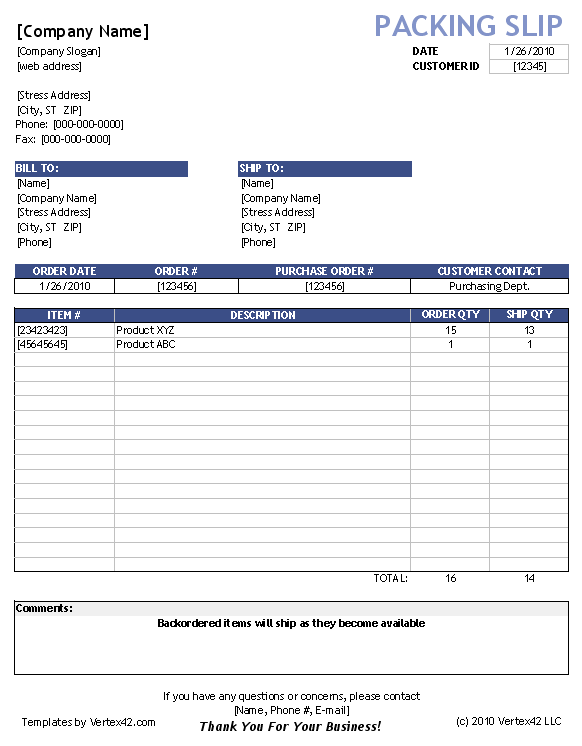Ecommerce order fulfillment comprises receiving orders from clients on different channels all over the globe, packing the right items in packages, shipping them, and ensuring that every customer gets the specific items they ordered.
This is where the packing slip comes into play. This itemized list detailing every customer’s order ensures that sellers or businesses pack the correct items for the right customer and that every delivery is successful.
Stick with us as we break down the meaning of a packing slip, why it’s essential, and how to create one.
Table of Content
- What Is A Packing Slip?
- Who Sends The Packing Slip? Who Receives it?
- Why Is A Packing Slip Important?
- What Information Should Be On A Packing Slip?
- Creating a Packing Slip
- A Well-Thought-Out Custom Packing Slip Message Template.
- Conclusion
What Is A Packing Slip?
A packing list/packing list/shipping list is a shipping document that comes along with the order. It is a document that the seller/sender of goods sends with every shipment.
The packing slip contains the details of the shipped package. It lists the order date, the items in the package, the weight, size, and quantity of each item, and descriptions of each item. It is usually put inside the package/box containing the items.
The packing slip allows the receiver of goods to cross-check and ensure that the items in the shipment are exactly what they ordered. It is a quality control document that ensures that sellers ship the correct order and the buyers receive the goods they ordered.

Who Sends The Packing Slip?
The seller/sender of the goods does.
But not every seller sends a packing slip. Only sellers of products (item or goods-based businesses) send packing slips along with the ordered goods. Service providers have no physical products to ship. All they can do is send an invoice.
Who Receives The Packing Slip?
The packing slip is meant for three types of people (parties).
- The customer or recipient of the goods does.
- In the case of a business, the department in charge of receiving and recording the goods/supplies is responsible for obtaining the packing slip for order verification.
- The destination country’s customs unit. A packing slip helps in ensuring that incoming goods pass regulatory compliance. Customs officers use the packing slip to reconcile the items on the export documents with the actual incoming goods. They also use it to ensure that imports are not prohibited.
Why Is A Packing Slip Important?
Packing slips are beneficial to both sellers (senders/shippers) and buyers (recipients). Here is how;
It ensures that the correct items are packed/shipped.
A packing slip provides a detailed description of the goods getting shipped, ensuring that the correct items are packed. It acts as a reference point when packing the items in an order.
The packagers refer to it to ensure that the right items go into the right ordered pack in their correct specifications (quantity, color, weight, and size). If the items packed don’t match what is on the packing slip, the seller can quickly rectify the mistake and repack the correct order. This ensures that the customers get the correct orders.
It ensures that the correct goods have been delivered to the buyer
Customers or buyers use a packing list to ensure that the goods delivered check out with those on the packing slip. That the received items are what they ordered for.
They do so by checking off the received items against the items on the packing slip.
It may act as a shipping label for carriers.
Suppose a shipping label gets damaged in transit due to improper handling or humid conditions. A carrier can use the recipient’s details on the packing slip to get the shipment to its destination/recipient.
It shows that goods are not prohibited.
Packing slips show the classification of goods, whether they are hazardous or non-hazardous or whether they are prohibited or not. And this information helps a carrier to know how to transport the goods.
Some carriers use this information to decide whether to ship certain goods or not. For example, although a carrier like USPS ships kitchen and pocket knives, it doesn’t ship switchblade knives. So if you are a business selling knives and sending them through USPS, your packing slip informs them that your shipment is within their range of business.
It helps in ensuring customs compliance.
Packing slips are of vital importance in international order fulfillment. A destination country’s customs officials use packing slips to determine the import regulatory compliance status of the items. The packing slips show whether the packages entering their country are prohibited or not. For example, Uganda, the UK, Denmark, and Japan have import regulations prohibiting certain knife types from entering their borders.
It acts as a reference document in bookkeeping.
Although the packing slip ensures that the sellers ship the right items to the buyers, you can also use it to ensure good record keeping.
Suppose you misplace or lose a commercial invoice for a particular order/transaction. You can refer to that specific transaction’s packing slip to ensure that you have the correct records.
It simplifies the returns and refund process.
Sometimes, order fulfillment has bad days where things go wrong. And these mistakes can lead to customers making returns. Suppose a customer checks his/her package and discovers a damaged item or one that doesn’t match what is on the packing list. In that case, the customer can immediately contact the seller and arrange for another delivery or refund.
It streamlines order tracking and packaging.
Packing slips simplify and increase efficiency in managing and executing all order fulfillment activities.
Order fulfillment necessitates supplying and storing items/goods/products in various warehouses across the globe or country. And this involves different categories of commodities getting shipped in different packages to these warehouses.
When a customer orders something, it can get pretty difficult and confusing to keep up with all clients’ order requests. Packaging slips remove the panic and confusion about every client’s specifications. They provide a guide about what items should be packaged in what order or shipment.
What Information Should Be On A Packing Slip?
Every packing slip should have the following information in a way that is simple and easy to read and understand.
Seller (shipper’s) details: The information about the business shipping the items. It includes the business name, address, contact information, and logo.
Recipient (customer) details: This includes the customer’s name, billing and shipping address, and contact information.
Carrier Details: Information about the shipping company delivering the package to the customer. It includes the carrier’s name, address, and contact information.
Order details: This includes the order date, purchase order number or order ID, and packing slip number
Item details: This is detailed information about a particular order. It includes the list of items ordered and shipped, product quantities, size, weight, price details for each item, and SKU ID.
Creating a Packing Slip
Here are two ways to create a packing slip
Option #1: Google Sheets and Excel
You can use the packing slip templates in Google Sheets or Excel. But this is a tedious way of sitting in front of a computer and manually typing in every customer’s order specifications/details.
You can automate the generation of packing slips using option #2.
Option #2: Shipping software that automates packing slips generation for all orders
Generating packing slips from your shipping or inventory management software is seamless.
As an eCommerce business using shipping software, you need not worry about how to create packing slips for all your customers. ECommerce shipping software is integrated with online marketplaces, carriers, and other tools like packing slip templates, making order fulfillment easy.
Once a customer makes an order, the shipping software automatically syncs orders from your integrated sales channels to one central location. And this enables you to generate and print a packing slip at your convenience.
Grow Your Brand With A Well-Thought-Out Custom Packing Slip Message Template.
Just like how the right branding on all company documentation like letters, commercial invoices, receipts, and business cards builds a positive brand image, a branded customized packing slip with the right details can also improve brand image and increase engagement with your customers.
A well-planned and well-designed packing slip that satisfies a customer’s need increases the efficiency of your order fulfillment, selling the company more. It is an asset to your business that increases customer satisfaction and retention. For this reason, it is crucial to choose the proper custom packing slip message template. It gives you the right layout, design, message, and details for your packing list.
Example of a packing slip template

Conclusion
Packing slips are a vital aspect of proper and professional order fulfillment. They ensure that the shipper sends the right items to all their clients and that the clients get what they ordered. You can simplify creating your eCommerce business’ packing slips by automating the generation of your packing slips with your order fulfillment partner or shipping software.
At NextSmartShip, our order fulfillment solutions provide you with an excellent way of growing your brand beyond your customer’s buying experience. We offer various options that you can use to customize your packing.
We can help you place promotional inserts like flyers, marketing material, or any special inside packaging and design your custom template whose layout and content reflect your brand best.
Partner with us for your well-branded and efficient order fulfillment needs. Explore the next level.




